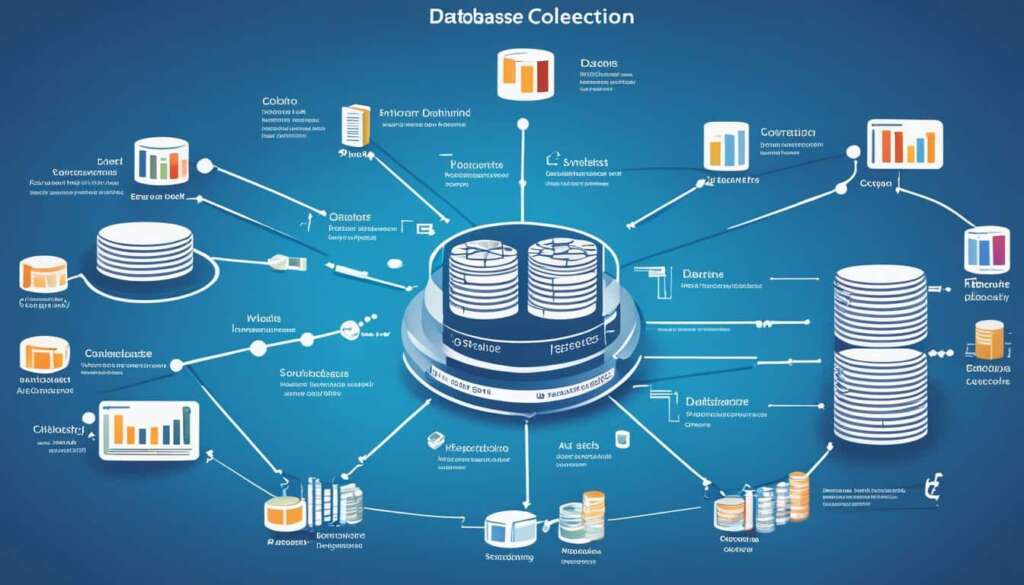Table of Contents
A database is an organized collection of related information. It can be digital or physical, but for the purposes of this article, we will focus on digital databases. Data is the raw bits of information without context, whereas information is data with context and meaning. Databases enable the storage, management, retrieval, and analysis of data in a structured manner. They play a crucial role in managing and organizing digital information effectively.
What is Data, Analytics, and Insights?
Data, analytics, and insights are fundamental components of effective decision-making and informed business strategies. Let’s explore each of these elements in detail:
Data
Data refers to a collection of facts, such as numbers, symbols, or words, that provide measurements or descriptions of a specific situation. It serves as the raw material for analysis, providing the foundation for insights and informed decision-making. Without data, organizations would lack the necessary information to understand trends, patterns, and customer behaviors.
Analytics
Analytics is the process of using tools and techniques to analyze data and extract meaningful insights. Through analytics, organizations can uncover patterns, relationships, and trends hidden within complex datasets. This process involves applying statistical methods, machine learning algorithms, and other data analysis techniques to make sense of the data. By leveraging analytics, businesses can gain valuable insights into customer preferences, market trends, and operational efficiencies.
Insights
Insights are the valuable discoveries made by analysts or business users when they uncover patterns or relationships in the data that were previously unknown or unexpected. Insights provide a deeper understanding of the data and its implications, enabling organizations to make data-driven decisions. These insights can inform strategic direction, identify new opportunities, improve operational efficiencies, and drive innovation.
Data, analytics, and insights are interconnected and build upon each other. Data serves as the foundation, analytics transforms the data into meaningful information, and insights drive informed decision-making and business strategies. Let’s visualize this relationship:
Through the seamless integration of data, analytics, and insights, organizations can harness the power of their data to drive growth, enhance customer experiences, and gain a competitive edge in today’s data-driven business landscape.
The Different Types of Databases
Databases come in various forms, but one of the most widely used types is the relational database. Relational databases organize data into tables comprising rows and columns, and they establish connections between tables through common fields. Renowned examples of relational databases include Microsoft Access, MySQL, and Oracle.
Another type of database is NoSQL, which expands to “not only SQL.” NoSQL databases differ from traditional relational databases by not employing the conventional row-column structure. Instead, they are designed to handle vast amounts of unstructured or semi-structured data. NoSQL databases are categorized into key-value stores, document databases, column-family databases, and graph databases.
Let’s explore each type of database in more detail:
1. Relational Databases
Relational databases are widely used in applications that require robust data organization and adherence to predefined schemas. They store data in tables with relationships established through primary and foreign keys. The structured nature of relational databases facilitates efficient data retrieval and manipulation. However, relational databases may have limitations when it comes to handling large-scale data or unstructured data types.
2. NoSQL Databases
NoSQL databases have gained popularity due to their ability to handle large volumes of unstructured or semi-structured data. The flexibility of NoSQL databases allows developers to store and manipulate data without adhering to rigid schemas. Key-value stores like Redis and DynamoDB are suitable for high-speed data retrieval. Document databases, such as MongoDB, are ideal for storing and querying JSON-like documents. Column-family databases, including Apache Cassandra, excel in handling large amounts of data across distributed systems. Graph databases like Neo4j excel in representing complex relationships between entities.

Understanding the different types of databases is essential for choosing the right solution to meet the specific needs of an organization. Whether it’s relational databases for structured data or NoSQL databases for unstructured or semi-structured data, selecting the appropriate database type can significantly impact data management and analysis capabilities.
Key Components of a Database
When it comes to working with databases, data scientists need to possess a range of key skills that allow them to effectively manage and analyze data. These skills include:
- Database Skills: Proficiency in SQL (Structured Query Language) is crucial for data retrieval and manipulation. SQL allows data scientists to write queries to extract the desired information from the database.
- Data Modeling: Data modeling involves designing the structure of the database, including determining the tables, relationships, and constraints. It helps ensure that the database accurately represents the real-world entities and their relationships.
- Data Cleaning: Data cleaning, also known as data cleansing, is the process of identifying and correcting or removing errors, inconsistencies, and inaccuracies in the data. This step is essential before performing analysis to ensure reliable results.
- Database Optimization: Database optimization techniques aim to improve the performance and efficiency of the database. This can involve creating indexes, denormalizing tables, and optimizing query execution plans to enhance data retrieval speed.
In addition to these skills, data scientists should also have a good understanding of data integrity and quality checks to ensure the accuracy and reliability of the data. Integrating databases with programming languages such as Python and utilizing visualization libraries allows for effective data analysis and presentation.
Relational Databases and Database Design
Relational databases play a crucial role in managing and organizing data through the use of tables. In this design paradigm, each table represents a specific entity, and the relationships between tables are established through keys.
Tables consist of rows, also known as records, and columns, known as attributes, which define the characteristics of the data being stored. Keys, such as primary keys and foreign keys, are used to uniquely identify rows and establish relationships between tables.
One important concept in database design is normalization, which involves breaking down large tables into smaller, related tables to minimize data redundancy and improve data integrity. By eliminating duplicated information, normalization helps ensure that data is efficiently stored and updated.
Relational databases provide a structured and organized way to store and manage data, making it easier to retrieve and analyze information. However, it’s important to note that relational databases have limitations in terms of scalability and flexibility.
Here’s a simple example to illustrate the concept of relational databases:
| Customers | Orders |
|---|---|
| Customer_ID | Order_ID |
| Customer_Name | Order_Date |
| Customer_Email | Product |
In this example, two tables, “Customers” and “Orders,” are defined. The “Customers” table stores information about customers, such as their ID, name, and email. The “Orders” table, on the other hand, contains details about the orders, including the order ID, date, and the product purchased.
By establishing a relationship between the two tables using keys, we can link specific orders to the respective customers. This relational structure allows for efficient querying and analysis of customer data and order information, enabling businesses to gain valuable insights.
Key Takeaways:
- Relational databases use tables to organize data and establish relationships between entities.
- Tables consist of rows and columns, with keys used to uniquely identify rows and establish relationships.
- Normalization is important in database design to minimize data redundancy and improve data integrity.
- Relational databases provide structured and organized ways to store and manage data.
- However, relational databases have limitations in terms of scalability and flexibility.
https://www.youtube.com/watch?v=mEakGW6vzpM
The Role of Databases in Information Systems
Databases play a crucial role in information systems by transforming raw data into meaningful information. Through the use of databases, information systems are able to put data into context, aggregate and analyze it, and generate knowledge that can be used for decision-making and innovation.
By organizing and relating data, databases provide the foundation for effective data management, analysis, and interpretation. They enable information systems to track and manage various aspects of an organization, such as student clubs in a university or customer data in a business.
The goal of databases is to convert data into useful information that can drive insights, decisions, and policies. It is through the effective use of databases that organizations are able to transform data into actionable knowledge, enabling them to make informed decisions and drive innovation.
FAQ
What is a database?
A database is an organized collection of related information that enables the storage, management, retrieval, and analysis of data in a structured manner, both digitally and physically.
What is the difference between data and information?
Data refers to raw bits of information without context, whereas information is data with context and meaning. Databases play a crucial role in managing and organizing digital information effectively.
What are data, analytics, and insights?
Data is a collection of facts that represent measurements or descriptions. Analytics is the process of analyzing data to identify patterns, relationships, and trends. Insights refer to the discoveries made when patterns or relationships are uncovered in data, leading to better decision-making.
What are the different types of databases?
The most popular type of database is the relational database, which organizes data into tables with rows and columns. NoSQL databases, on the other hand, are designed for handling large volumes of unstructured or semi-structured data and do not use the traditional row-column format.
What skills do data scientists need to work with databases?
Data scientists need proficiency in SQL (Structured Query Language) for data retrieval, as well as knowledge of data modeling, database design, data cleaning, transformation, and optimization techniques. Integration with tools and languages like Python is also important.
What is the role of relational databases in database design?
Relational databases organize data into tables, with each table representing a specific entity. Relationships between tables are established through keys, such as primary keys and foreign keys. Normalization is a concept in database design that minimizes data redundancy and improves data integrity.
How do databases contribute to information systems?
Databases transform raw data into meaningful information within information systems, allowing for context, aggregation, analysis, and knowledge generation. Databases provide the foundation for effective data management, analysis, and interpretation in organizations.













